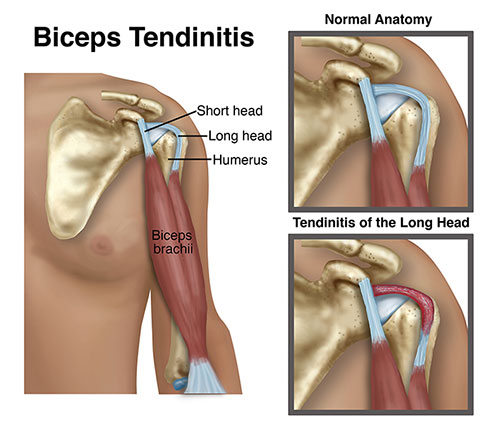nalco group
bone, muscle & joint pain physio
BOOK NOW / WHATSAPP ABOUT YOUR PAIN OR INJURY
- NOVENA 10 Sinaran Drive, Novena Medical Center #10-09, Singapore 307506
- TAMPINES 9 Tampines Grande #01-20 Singapore 528735
- SERANGOON 265 Serangoon Central Drive #04-269 Singapore 550265
Home > Blog > Physio & Hand Therapy > Conditions We Treat > Importance of staging and compression in tendinopathy physio
staging and compression in tendinopathy physiotherapy and hand therapy
Tendon problems are common in
runners (and anyone who is active) and can become a persistent issue if not properly treated. In
recent years our understanding of the pathology of tendon pain and injury has
grown – we now know that it isn’t really an inflammatory process and
that load plays a large role. We also now know that it’s important to
determine the ‘stage’ of the tendinopathy and this will have a huge
influence on how tendinopathy is best managed and treated.

Jill Cook and Craig Purdam created a tendinopathy treatment model in 2009 that describes 3 different stages of tendinopathy:
- reactive tendinopathy
- tendon dysrepair
- degenerative tendinopathy
Think of these as a ‘continuum’ cycle rather than 3 completely distinct phases.
Reactive tendinopathy typically involves the tendon responding to a rapid increase in loading. For runners this often means
- a large increase in mileage
- a reduction of
rest days or
- a change in training type e.g. introducing up/down hill or speed work.
It can also be from direct trauma to a tendon.
It was thought that this reaction involved inflammation but we now understand that this isn't the case. The tendon does swell but this is due to movement of water into the tendon matrix* and not inflammatory products.
A key feature of a reactive tendon is that structurally it remains intact and there is minimal change in collagen integrity. Cutting the jargon for this means this is usually a reversible process.
***
Tendon dysrepair usually follows reactive tendinopathy if the tendon continues to be excessively loaded.
It is similar to the reactive stage but what happens is that the tendon structure begins to change with greater matrix breakdown. There may be an increase in vascularity and neuronal ingrowth.
***
Degenerative tendinopathy is more common in the older athlete and individuals. It represents a response of the tendon to long term tendon overloading.
There are multiple tendon structure changes making it less efficient at dealing with load. Collagen becomes disorganised and advanced matrix breakdown takes place alongside further increases in vascularity and neuronal ingrowth.
The tendon can appear thickened and nodular and there is risk of tendon rupture with advanced degeneration.
physiotherapy & hand therapy management of tendinopathy (tendon pains and injuries)
Cook and Purdam simplify the management by dividing tendinopathy into 2 stages which are
- Reactive / early dysrepair
- Late dysrepair / degenerative
Physiotherapy and hand therapy treatment varies considerably between these stages.
Many runners will have heard of “eccentric” exercise for tendon problems and may be trying ‘heel drops’ for Achilles tendinopathy or other eccentric exercises.
This will probably make things worse in a reactive tendinopathy but might help in the degenerative stage – this is why staging is so important in tendon treatments.
tendinopathy treatment in the reactive/ early dysrepair phase
The most important treatment in this stage is truly managing the load on the tendon.
This means that we need to
- decrease tensile load
- decrease compressive load
on the painful and injured tendon.
So tendons connect muscles to bones and because of that when muscle contracts to move, the tendons undergo a huge amount of tension repeatedly over a period of time each time. This is tensile load.
Food for thought for runners / joggers:
Each time your foot contacts the ground during running your body has to deal with an impact force equal to roughly 2.5 times your body weight.
Well the good news is that our tendons are able to take up to 8 times our body weight - whew! That's good to know too =)
For people who enjoy running, you can reduce the tensile load by:
- decreasing how fast you run
- decreasing how far you run
- taking a break as and when
That's for dealing with tensile loading of the tendon.
Next: Compression Load
Tendon injuries (tendinopathy) has a compressive element that needs to be considered and addressed as well.
For example with proximal hamstring tendinopathy the tendon is thought to be compressed against the ischial tuberosity (bone in your bottom) when the hip is flexed, such as during sitting. Reducing time spent sat is a simple way to reduce this compressive load.

Let's continue using the example of hamstring tendinopathy, running uphill and stretching the hamstring muscle can both place tension on the hamstring while it’s tendon is compressed against the ischial tuberosity.
As such both are likely to aggravate the condition, especially in the reactive stage.
That being said, managing tendon load DOESN'T mean completely not using or offloading the tendon such as not using the tendon at all - nonono - it's more like decreasing any loads that cause pain or reinjury, and allow the painful injury to recovery.
For runners and joggers, this can mean
- not going so fast or far
- not going uphills
- not doing sprints
typically it's modifying training, based on the severity of the tendon injury or tendinopathy.
Good news is that the reactive stage of tendon healing can be relatively short, and that pain can settle within 7-14 days (or shorter) BUT the healing tendon may still be sensitive to high (intensity / duration) and that's why training needs to be progressive to prevent tendon reinjuries.
Note: tendons have latent response to loading, so it can take up to 24+ hours before you can notice what or how your tendons react to load. Bear this in mind when doing any sports or activities - it may feel alright at the moment...but oh man the next day may be painful tendons.
Despite the lack of inflammation anti-inflammatory medication is thought to be helpful in the reactive stage. This is thought to be because it inhibits the production of proteins responsible for tendon swelling. Ibuprofen is considered one of the best drugs for this role and is not thought to have a detrimental effect on tendon repair. Note: please always consult your doctor before taking any medicines.
Isometric Exercise can reduce pain and maintain muscle strength in the reactive stage (provided it’s not done in a position where the tendon is compressed). Isometric exercise is where the muscle works against resistance without creating joint movement or changing muscle length.
Aka tightening muscles without moving the joints.
Don’t Stretch – this sounds a little counterproductive but the main issue we find with stretching is the potential for tendon compression. The hamstring tendon, for example, is often compressed during stretching which is likely to aggravate symptoms.
Sometimes muscle length is an issue you need to address but it is probably wiser to do this after the reactive stage. You might find using a foam roller or trigger ball can help improve flexibility without causing tendon compression.
We recommend regular sports massage and deep tissue massage to keep muscle supple and flexible - it works great especially for compressive tendinopathy issues.
Exercise...or Rest?
It can be a difficult debate and comparison. Do we push through the pain? Or rest?
So to decide, it depends right on:
- are you training for a race / competition? Or off season?
- how bad are the symptoms?
- can you exercise without pain (during exercise and 24-48 hours later)?
- do your body feels tired / lack of rest?
Generally, i take a "big picture" approach - I dont want to win small battles but lose the war ie go for small exercises that could kill my chance of competing or put me in hospital for some time?
Of course not...right?
Will timely rest stop this problem from becoming a bigger, persistent long term problem? If yes, then rest. I prefer to lean onto the side of caution and conservative, so i will prefer to rest.
As a general rule of thumb or guide, i would recommend that when you go back to exercise, don't go back like nothing had happened - decrease the intensity and duration by 90% first for example:
- if you used to lift 10 kg weight, try with 1 kg first
- if you used to run 10 km, try 1 km first
Go slow, and if it's too easy and no pain, then increase more in progressive 10% add-ons the NEXT session. See how your healing tendon responds and then take it from there.
Late dysrepair / degenerative tendinopathy
The late dysrepair or degenerative tendons
tends to affect the older athletes and individuals more than in younger
people. Of course we will have to note that one CAN have BOTH reactive
and degenerative at the same time...
This is because parts of the tendon may become degenerate while other parts remain fairly normal.
The ‘normal’ non-degenerate areas of the tendon can respond like any other tendon to excess load and enter a reactive stage...but if your tendon has been aching and tender for a while, gradually the tendon is thickened and has palpable ‘nodules’ within it then it’s likely you have a degenerate tendon.
At the same time, if you’ve suddenly had an increase in pain in response to increased mileage you may well have a reactive tendinopathy alongside a more chronic degenerate one. If this is the case the principles of managing a reactive tendon apply – manage load, consider anti-inflams and use isometrics until things settle.
Management: Load management – Key here is know what aggravates your symptoms.
Why this is particularly important is because when you know what makes things worse then you can focus specifically on changing that.
There are two parts to this theory and practice. Know the theory and see what happens in practice.
For example proximal hamstring tendinopathy:
- Theory – symptoms will be aggravated by compression of the tendon such as sitting on firm surfaces, stretching the hamstring, leaning forward with the knees straight and by high tensile load such as running fast, over-striding when running or carrying a heavy load (e.g. Running with back pack). Running up hill is thought to combine both compression and tensile load and is especially provocative.
- Practice – make a note of what actually aggravates your symptoms as you may not fit the textbook! A training diary is very useful for this. Note what running you’ve done and any symptoms each day and this might give you a better idea of what to change.
- Management – avoid hills and speed work initially. Stick to a comfortable pace with smaller stride length. Gradually re-introduce potential aggravating factors but allow the hamstring tendon time to adapt and monitor symptoms.

Rest – a big part of managing tendinopathy is how you use rest as a tool for healing your injured and painful tendons.
Tendons can adapt to load given adequate rest time.
This process takes around 3 days following exercise but you may find just allowing 1 rest day between runs is enough to prevent repeated tendon overload.
- For those of you running 5
or 6 days a week a rest day after your long run may be more beneficial
than a ‘recovery run’.
- If you have a degenerate tendon it might be sensible to replace 1 or 2 of these runs with rest or cross-training.
Graded increase in mileage or training intensity – in order to allow the tendon to adapt to load, changes to training need to be done gradually while monitoring symptoms.
So if say you want to increase something, add one thing a time eg
- add more intensity / load / speed
- add more duration
- add more varied uphill / downhill
Just ONE addition per week and see how it goes from there.
